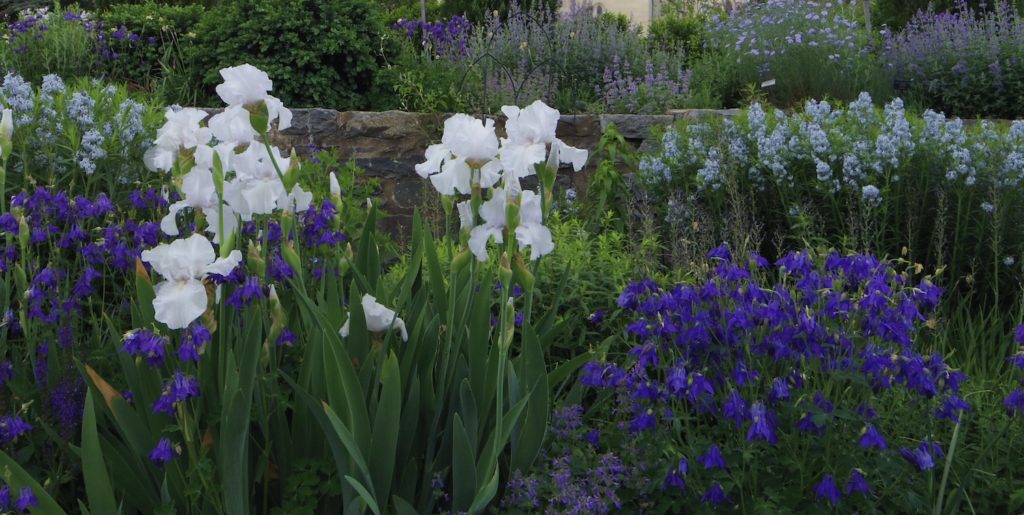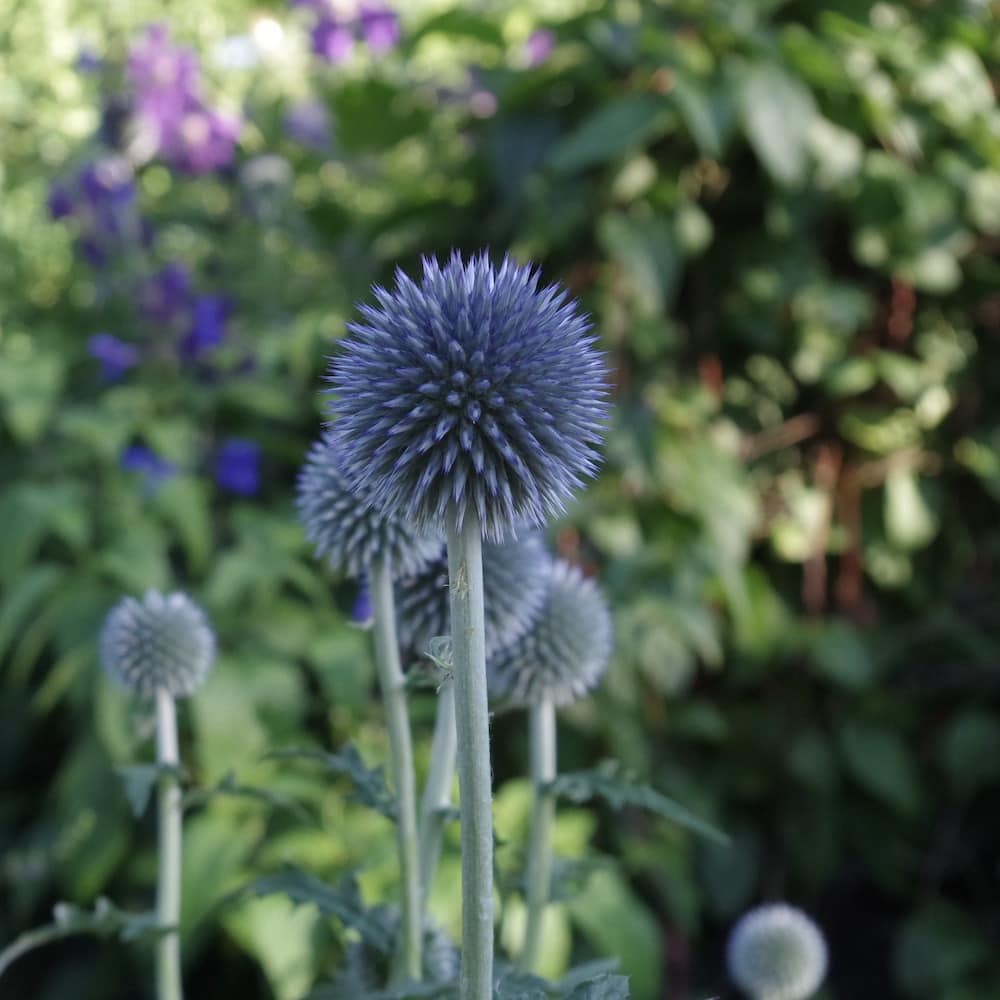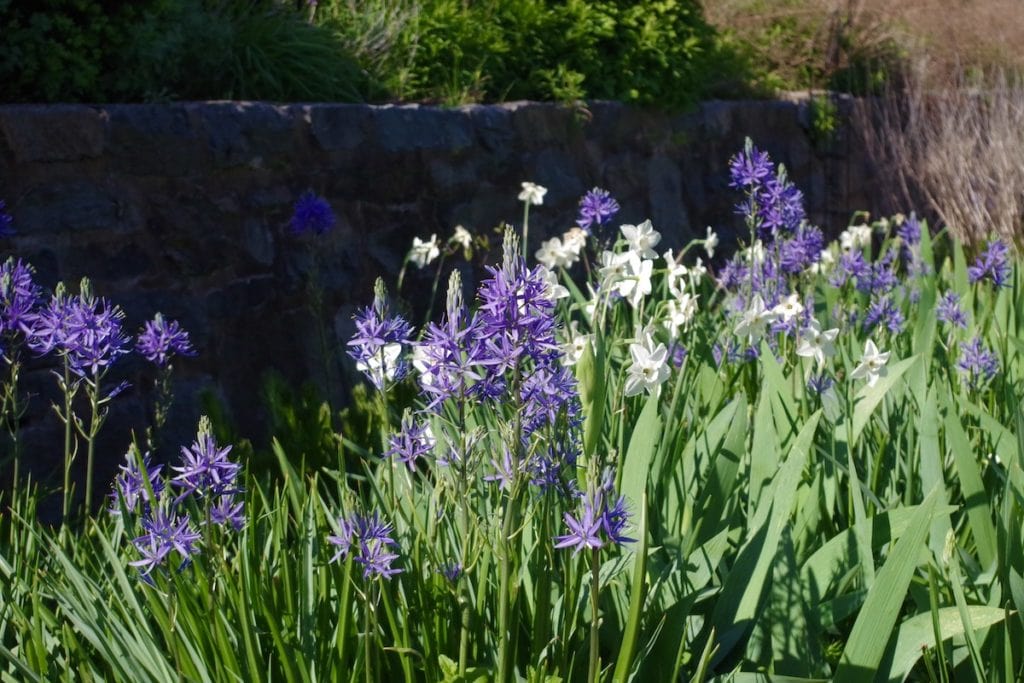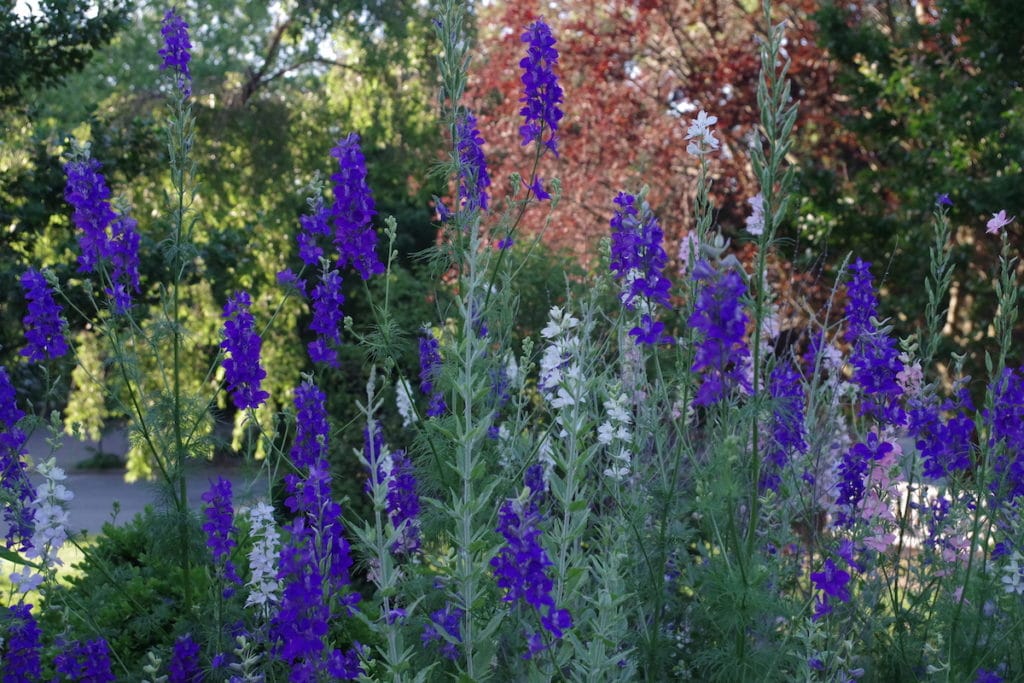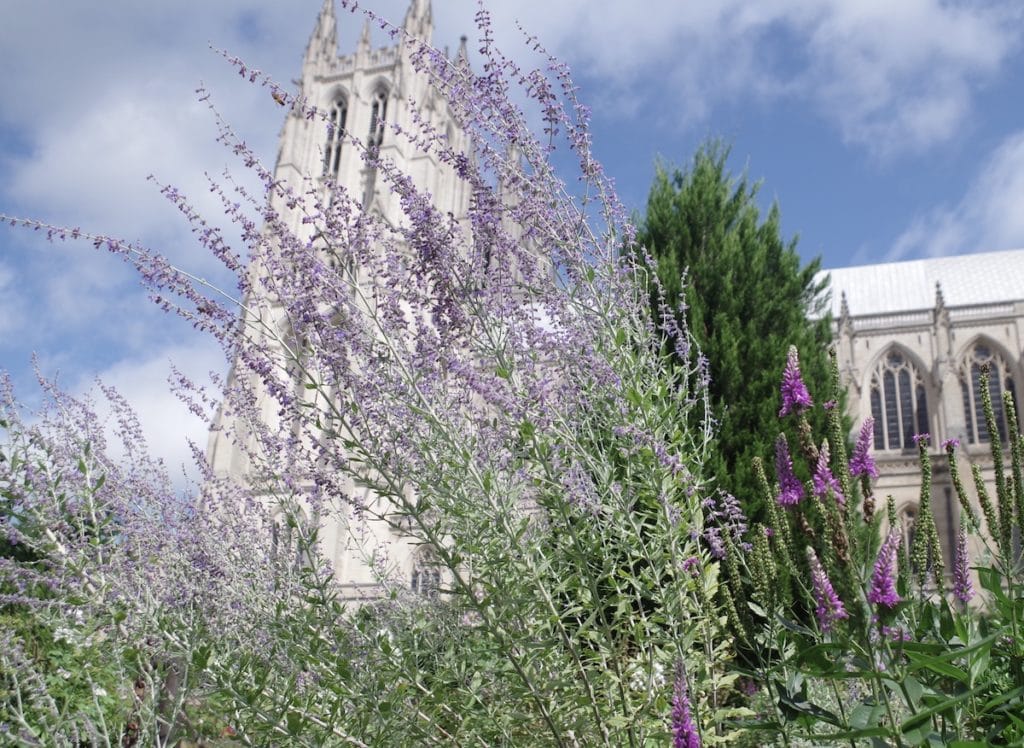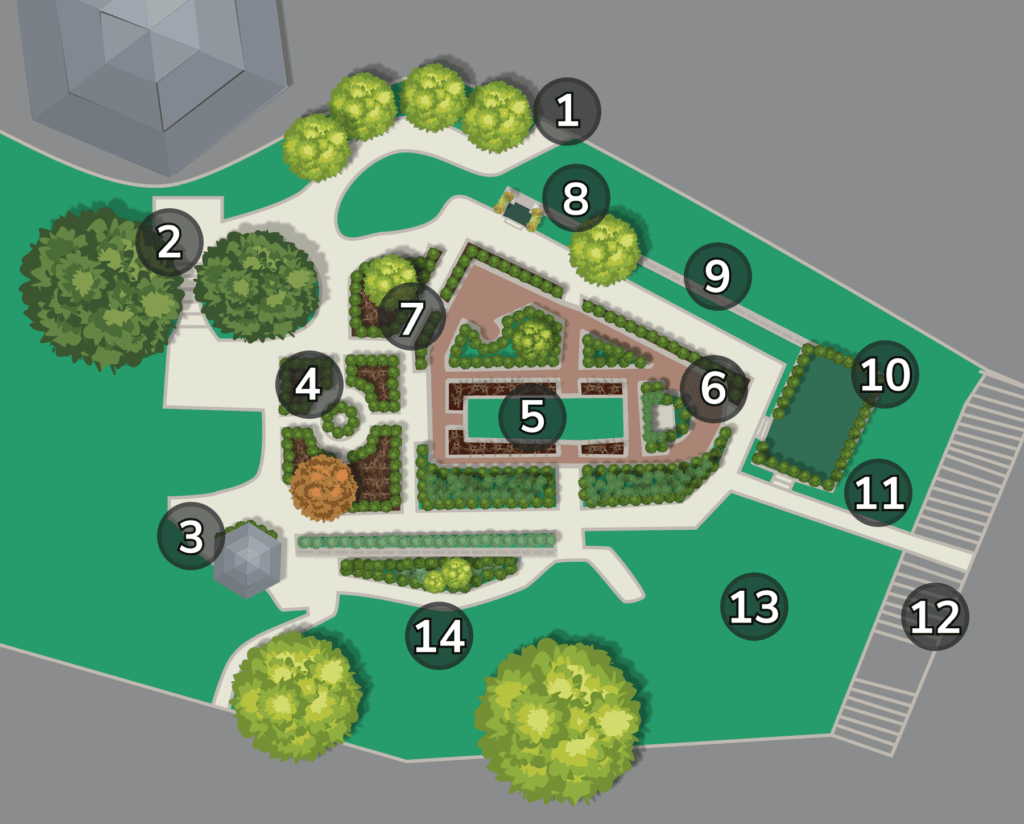
No. 14 On The Map
Lower Perennial Border
Known as the Blue Border, the Lower Perennial Border forms the southern edge of the Bishop’s Garden. It is planted in with a variety of perennial plants that bloom in shades of lavender, white, and blue.
The Lower Perennial Border is formed by a gently curving walkway and a blue-gray stone wall that serves as a backdrop to the layers of cool-toned blooms. The western end of the border is anchored by Shadow House. The old weeping cherry tree that shelters the Prodigal Son statue is at the border’s east end. Above the stone wall is another row of purple-hued perennials that parallels the Bishop’s Garden’s Yew Walk.
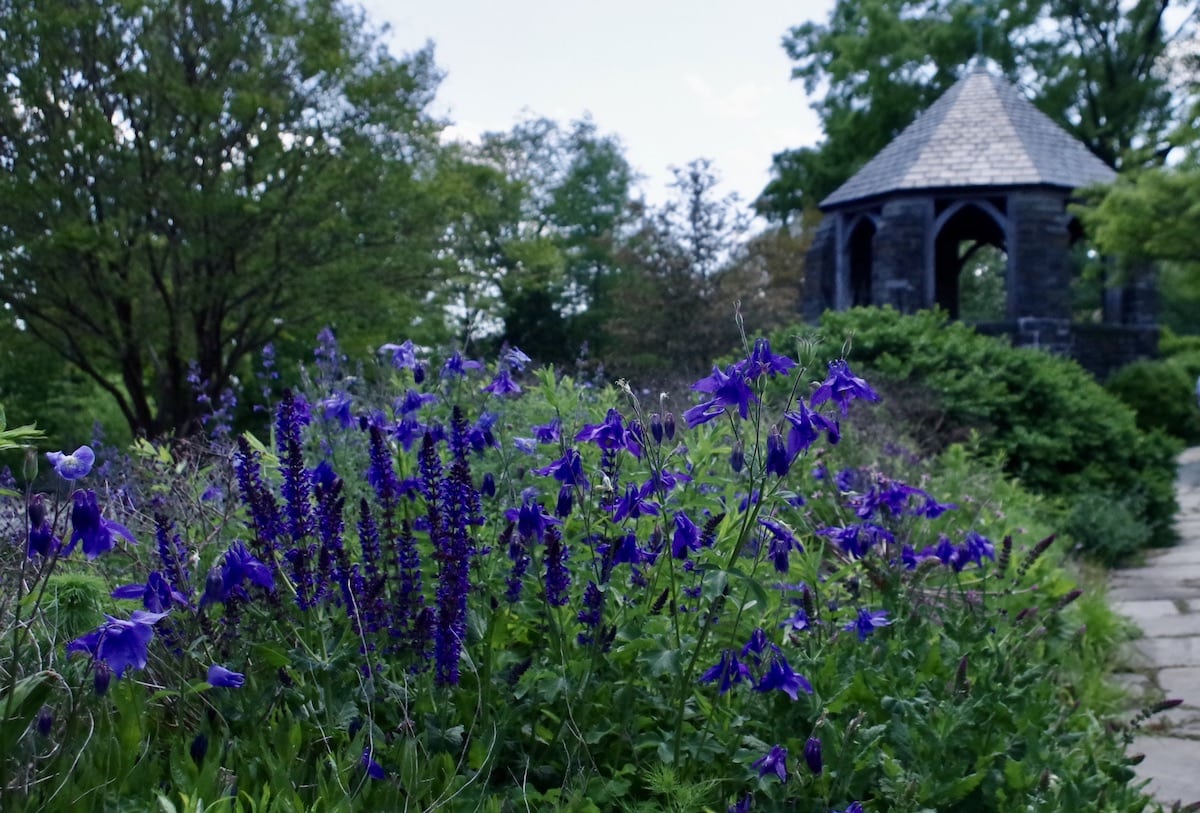
This planting bed was dedicated as a memorial to Bessie Huidekoper Fay. A bluestone plaque in her honor was placed within the stone wall near Shadow House in 1980. Colonel Reginald Huidekoper established a trust that provided for this memorial to his wife. The plaque is inscribed: In Loving Memory Bessie Huidekoper Fay 1889-1973
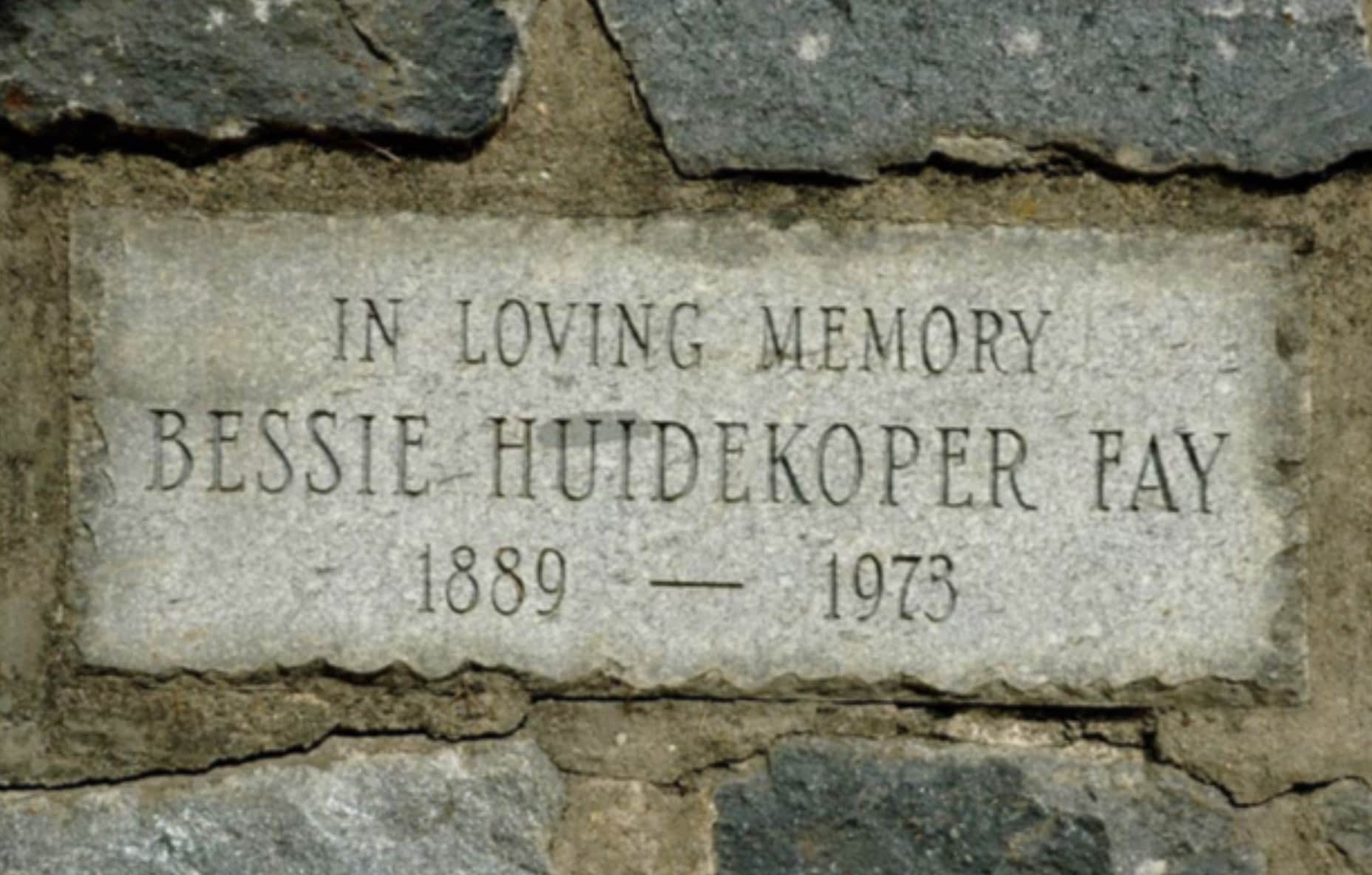
The Lower Perennial Border blooms with iris, blue salvias, globe thistle, agastaches, buddleias, lavender, nepetas, larkspur, and sage. By mid-summer the perennial plants nearly obscure the stone wall at the back of the border. Stepping back from the walkway (toward Pilgrim Road) the terraced levels of the Bishop’s Garden come into full view with the south side of the Cathedral creating a dramatic Gothic backdrop.
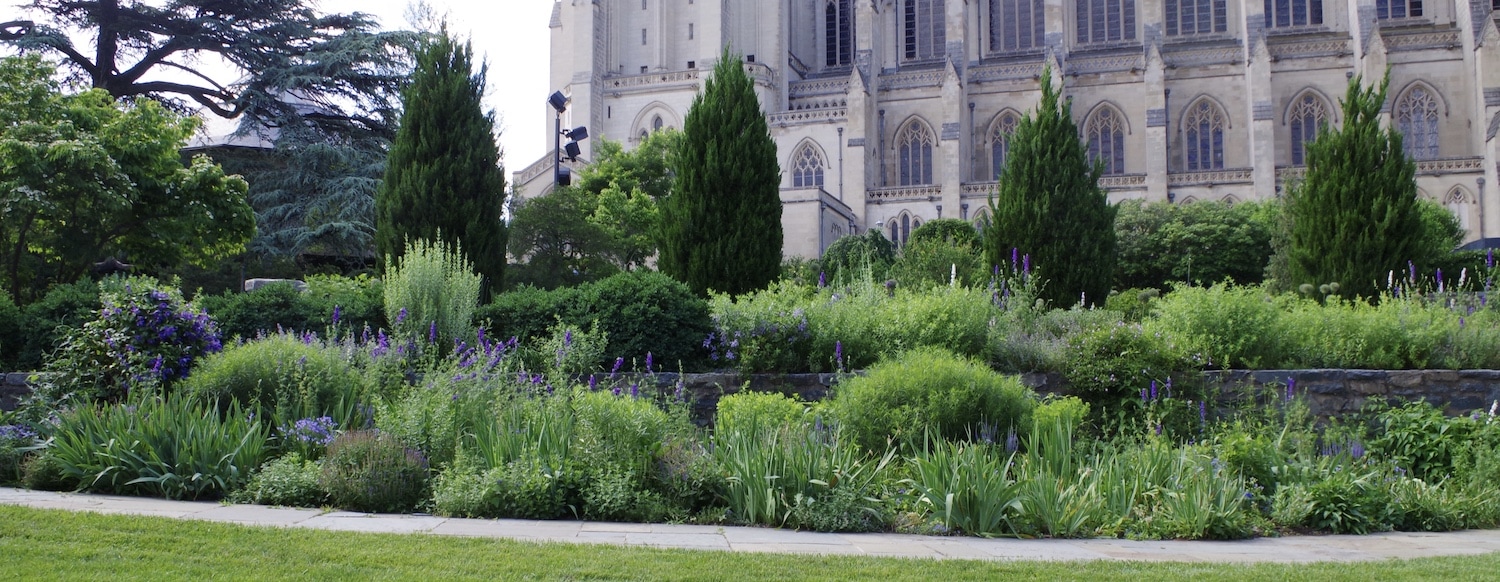
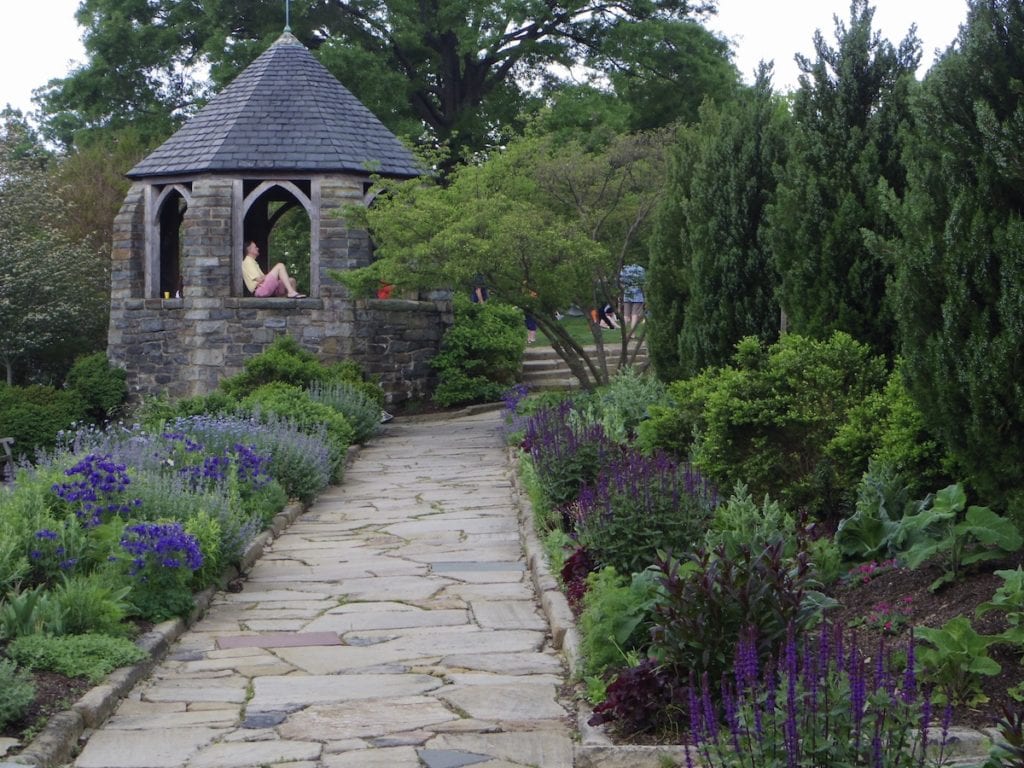
Walk up the steps alongside Shadow House to return to the center of the Bishop’s Garden. The stone path of the Yew Walk parallels the wall behind the Lower Perennial Border.
Help Us Keep The Gardens Growing
Partner with us to ensure that the 57 acres of gardens and grounds surrounding Washington National Cathedral continue to be a haven of peace and refreshment in the midst of the Nation’s Capital.


